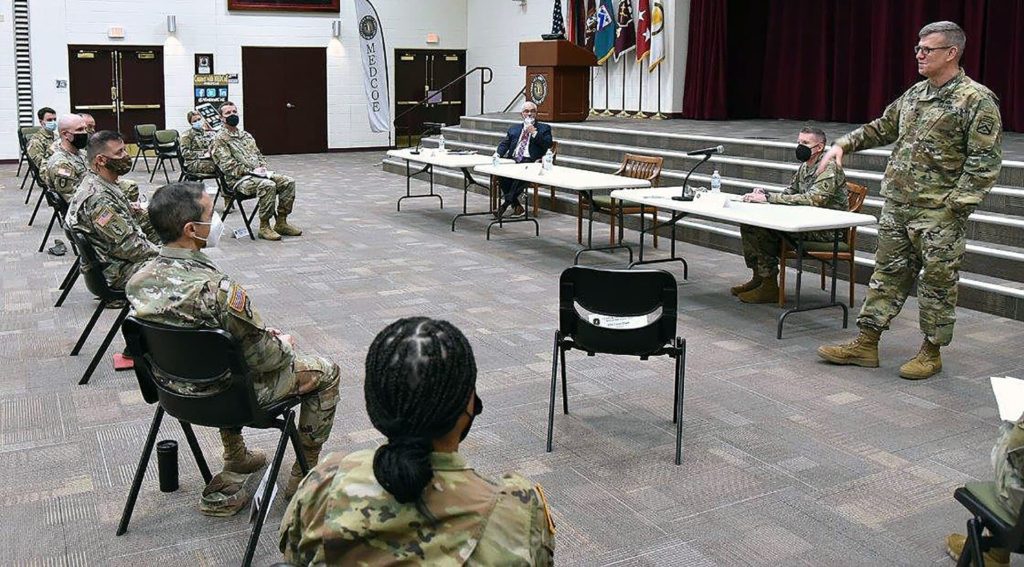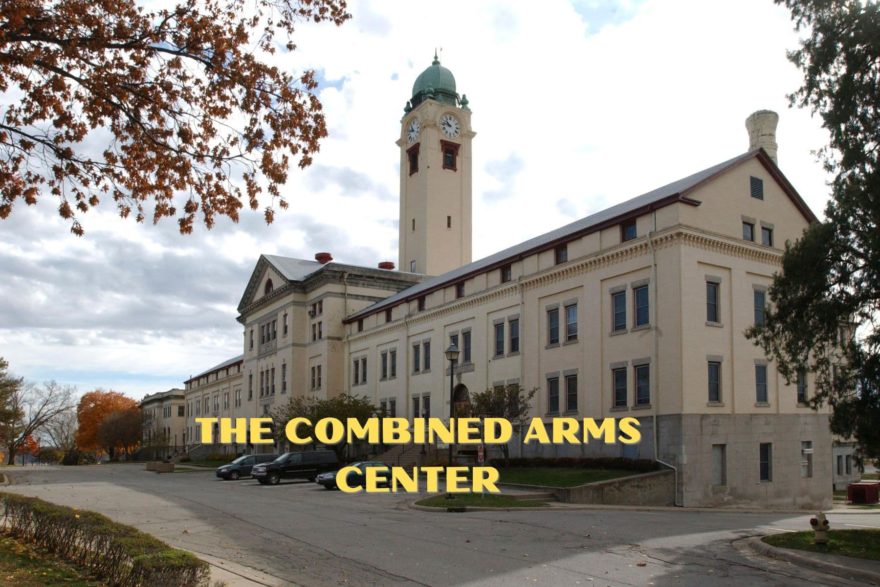The Combined Arms Center (CAC) is the Army’s training, doctrine, and leader development headquarters. Its headquarters is at Fort Leavenworth, Kansas.
Combined arms tactics were developed in World War I to break through enemy lines using artillery, infantry, and air power. They were also used during the Hundred Days Offensive in 1918, when they allowed the Allied forces to win the war.
The Combined Arms Center, located at Fort Leavenworth in Kansas, develops warfighting doctrine and trains senior Army officers as a subordinate unit of the Training and Doctrine Command. Its mission is to train the Army’s best and brightest for the tasks of battle and reshape the Army for the challenges of tomorrow.
The Center’s top-tier programs include the Integrated Task Force Academy, the Combined Arms School of Excellence, the Soldier Operations Center, and the TRADOC Training Division. CAC also conducts an array of smaller-scale and more specialized initiatives, such as Project Athena, the Army’s new officer development program.
A large part of the Combined Arms Center’s business is developing and executing the new Army’s “expeditionary land formations with campaign qualities,” which include expeditionary battle units, airborne and special forces squadrons, and other high-end combat vehicles such as armored fighting vehicles. In addition to these primary missions, the Combined Arms Center serves as an integrator of various branch skills.
To accomplish these tasks, the Center has a number of schools and centers across the country that execute the Center’s broader mission. For example, the Integrated Task Force Academy is a comprehensive program to train the Army’s most skilled and highest-achieving soldiers. On the other hand, the Combined Arms School of Excellence is a smaller-scale program to train the next generation of Army leaders.
As a subordinate unit of TRADOC, the Combined Arms Center is one of the Army’s key headquarters. Its commander, a Lieutenant General, exercises overall responsibility over assigned personnel and subordinate organizations to ensure that mission-related objectives are achieved efficiently. The Combined Arms Center’s most important responsibilities are to train, supervise and provide leadership for the Army’s expeditionary land forces.
What is the Army Combined Arms Command?

The Army Combined Arms Center (CAC) is a major subordinate command of the United States Army Training and Doctrine Command located at Fort Leavenworth, Kansas. The mission of CAC is to provide leadership and supervision for leader development, doctrine, education, lessons learned, functional training, training support, battle command, and specified areas designated by TRADOC in order to prepare the Army for war.
During wartime, the Army must be ready to deploy and conduct unified land operations in a joint environment. To meet these demands, the Army must be able to adapt and sustain itself and its leaders in a constantly changing environment. The Combined Arms Center helps the Army achieve these goals by developing concepts, doctrine, organizations, lifelong learning, and materiel solutions to enable the adaptive sustainment of an expeditionary force with campaign qualities.
The Army must have trained personnel with appropriate skill sets and qualifications to execute these missions. The Combined Arms Center provides the Army with this necessary resource through its schools, centers, and specialized activities spread across the country.
Since 1882, CAC has been the primary command responsible for preparing and integrating the Army’s leaders for war. Currently, its mission is divided between preparing the Army for the Global War on Terrorism and transforming it to meet future threats.
CAC is composed of several major subordinate organizations, including a coordinating staff and a special staff. The coordinating staff develops policy and procedures for the command, while the special staff advises on specialized or technical issues.
In addition, the command has a number of other groups that are also important to the success of the Army’s mission. For example, the Combined Arts Center and Command and General Staff College are part of the CAC.
These units provide leadership and support for Army personnel assigned to the Combined Arms Center and their counterparts throughout the Army. In particular, the Combined Arts Center and Command and general Staff College train and educate field grade officers who will be leaders of combined arms brigades.
Combined Arms Battalions (CAB) are the core maneuver element of an Armored Brigade Combat Team (ABCT; Heavy Brigade Combat Team before 2012). They are organized into 1 Infantry CAB and 2 Armor CABs per ABCT.
Where is the Combined Arms Center?

The Combined Arms Center is located at Fort Leavenworth, Kansas. It is the oldest continuously operating military installation west of the Mississippi River and is noted for its campus setting, open green spaces, and hometown character.
CAC is a major subordinate headquarters of the United States Army Training and Doctrine Command (TRADOC). As such, it is often referred to as the “Intellectual Center of the Army.” It is, in many regards, the “home base” for the majority of field grade officers across the Army.
Since 1882, CAC and its predecessor organizations have been tasked with preparing the Army for war. At present, that mission is divided between preparing the Army for the Global War on Terrorism and transforming it to meet future threats.
In order to accomplish these critical missions, CAC develops and integrates Army leader development, doctrine, education, lessons learned, functional training, training support, and proponent responsibilities.
Moreover, the Combined Arms Center maintains a permanent liaison function with the USAF. This function began in 1974 as the Tactical Air Command liaison officer and subsequently morphed into the Battle Command Training Program, now known as MCTP.
As a result, Det 1 provides airpower expertise during MCTP seminars and world-wide computer-simulated MCTP exercises. The unit also functions as the TRADOC’ enabler’ for a number of airpower initiatives.
The Combined Arms Center is also home to the Ike Skelton Combined Arms Research Library. It is the centralized repository for all military history publications and documents produced at the CAC and the Frontier Army Museum. In addition, the CSI has several specialized units that are involved in improving the quality of the instruction of military history throughout the TRADOC school system.
What is combined arms training?
Combined arms training is learning how to use multiple weapons and forces in conjunction with each other to accomplish a military objective. The concept of using multiple types of troops to achieve a common goal dates back to antiquity and the Greek city-states.
Throughout history, many nations have used combined arms tactics. During the Middle Ages, military forces fought with a wide range of weaponry, including infantry, cavalry, chariotry, camelry, and elephants.
While these fighting units may have been different in number and weaponry, they often were coordinated to attack and destroy the enemy’s front line. These groups were usually referred to as legions.
The legion was a brigade-sized unit of musketeers and light infantry (with crossbowmen). It incorporated a small cavalry regiment or attached auxiliary skirmishers to protect its spearmen from the arrows of the enemy, but it also provided fire support for its lighter units.
King Gustavus Adolphus of Sweden promoted using a combination of heavy and light troops for fire support during the 17th century. He also advocated fielding teams of commanded musketeers to assist in heavy cavalry operations.
These ideas would continue to shape the world of warfare into the early modern period. For example, the king of the Netherlands introduced the “commandeer” in the late 17th century as a new type of unit combining a large cavalry force with a small infantry regiment and artillery (typically 3-pounders).
In the eighteenth century, the idea of legions was revived and expanded into a brigade-sized organization consisting of musketeers and light infantry, sometimes augmented by additional units of auxiliaries for light skirmishing and for additional artillery protection against improvised explosive devices.
For the American Army, the concept of the Legion has long been a source of inspiration for incorporating combined arms into the battlefield. It is the basis for the Allied victory in the Hundred Days Offensive in 1918, and it was the focus of the Army’s Operational Art program during the 1970s.
Combined arms training is a critical part of an officer’s education and requires a systematic approach. The Combined Arms Sufficiency Study was undertaken in 1981 to determine what subjects should be taught and what is considered a sufficient level of proficiency to allow lieutenants and captains to operate successfully on the battlefield.
